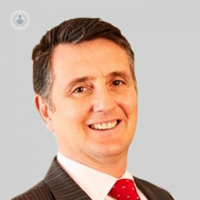What are clavicle fractures, and what causes them?
Autore:In this article here, esteemed consultant orthopaedic surgeon, Mr Steven Corbett, discusses clavicle fractures in expert detail.

What are clavicle fractures, and what causes them?
Clavicle fractures are common and can occur in children and adults. They are most commonly the result of a fall directly onto the shoulder, usually on the point, although some can result from a direct blow or less commonly a fall onto an outstretched hand. The injuries are often due to sporting activities such as cycling.
The fractures most frequently occur in the middle third of the clavicle; less commonly they occur in the outer (lateral) third, while inner (medial) third fractures are relatively unusual. There will be significant pain and tenderness in and around the fracture site. Arm movements will be limited due to the pain.
The clavicle itself will be swollen and the skin may be lifted, though it is unusual for the skin to be pierced by the bone. Often, a patient will support the arm with the opposite hand. Associated injuries of the brachial plexus - nerves that the supply the arm - can occur but are unusual.
When is treatment required?
If a clavicle fracture is suspected the patient should be seen in an Accident and Emergency Department, where an x-ray will be taken. If there are concerns regarding the exact nature / status of the fracture, a supplementary CT scan is sometimes also advised.
The majority of clavicle fractures can be treated non-operatively. This is because they generally will heal satisfactorily with no long term issues arising.
However, if the fracture is displaced (separated), especially with shortening of the bones, an operative intervention is sometimes advised. This is to prevent the clavicle healing in an abnormal position (malunion). This is especially relevant if the malunion results in a significant shortening of the clavicle. Where there is significant displacement and shortening, there is also an increased risk of the fracture not healing (non union).
Non-surgical management
Non-operative management usually involves the provision of a sling to support the arm for two to three weeks followed by two weeks of movement. A light strengthening programme is then undertaken with physiotherapy.
Recovery
In the first two weeks, the shoulder can be very painful with sleep disturbance and limited function. However, as the fracture begins to heal, the pain symptoms will improve and movement becomes easier. It normally takes 10 to 12 weeks to regain full movement and good strength in the shoulder.
If surgery is performed, the arm is again normally supported in a sling for two weeks before movement is commenced. It is a similar time period of recovery before the shoulder returns to normal.


